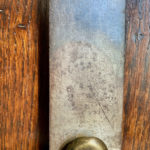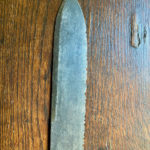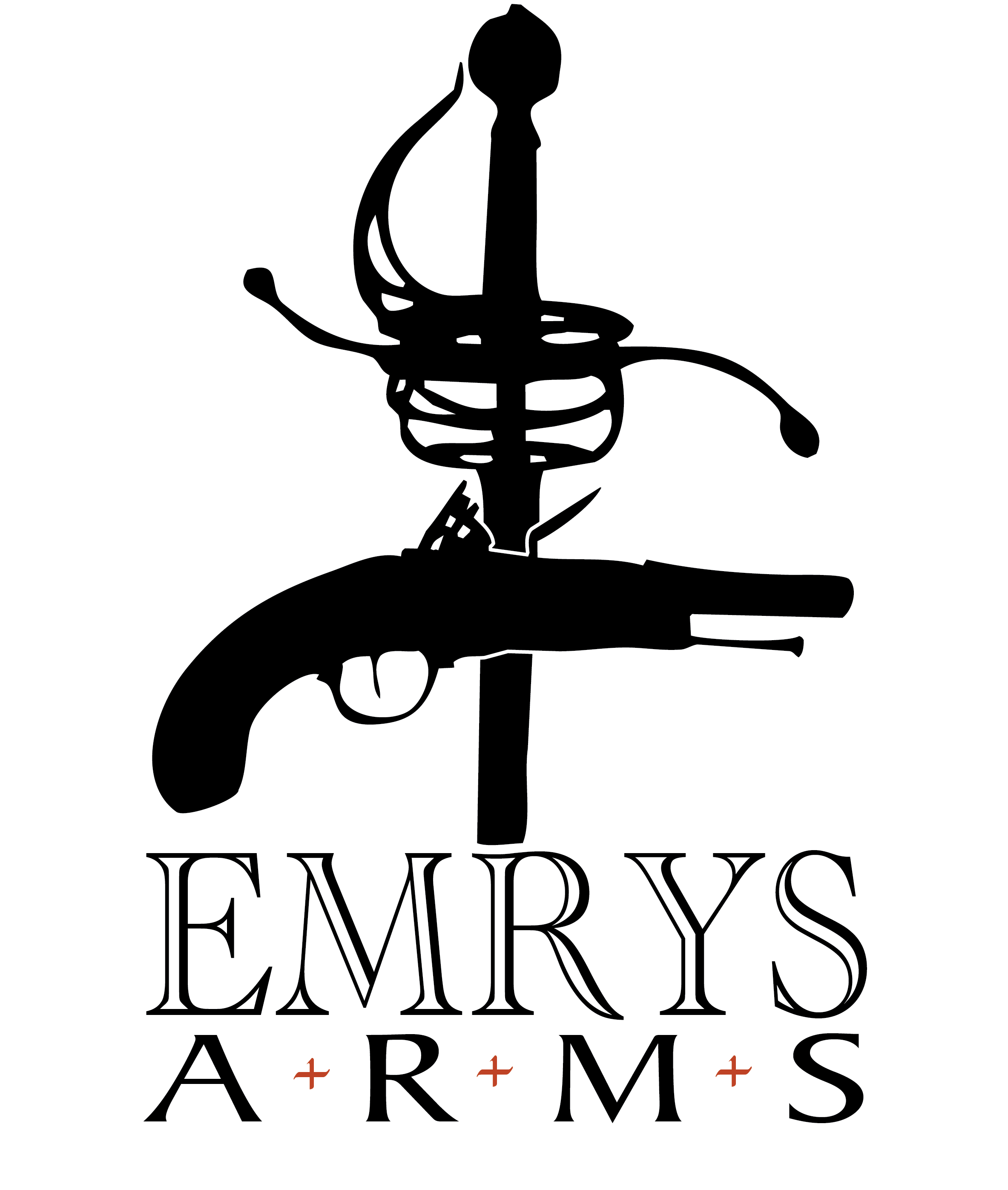| Collection #: | 2020.024 |
|---|---|
| Type: | Foot Artillery |
| Nationality: | British |
| Pattern: | No official pattern - sometimes referred to as the 'Spanish Hanger' |
| Date: | c.1790 - c.1826 |
| Hilt: | Brass |
| Blade Length: | 63.7cm (25.08") |
| Blade Width: | 3.7cm (1.46") |
| Overall Length: | 76cm (29.92") |
| Maker: | J H Reddell & Co. (1800 - 1821) |

A sturdy example of this robust small sword, otherwise known as a hanger. There is a small amount of play to the hilt and the quillon has lost its end-rounded button. The blade is somewhat jagged for three-quarters of its length from improper use (whether it was period inflicted or later, is unknown). It is otherwise quite a hefty sword that came out of Fredericton, New Brunswick. The right side of the blade has a crown over 2 and a makers mark for Reddell & Co. on the spine ( “DDE &Co.” is what is easily visible, the rest very faint to illegible). George Reddell seems to have been active from 1802-1821, according to May & Annis in their book Swords for Sea Service. These are the only markings to be found on this sword. Its leather grip is in surprisingly good condition. The tang has been peened on the end and does not appear to have been removed, implying this example is in its original condition.
This pattern of sword has always been a bit of a mystery in the arms-collecting world. It does not have an official pattern designation. The information that we do have on it is based on paintings produced in the early 1800s and some vague letters or reports, which discuss its use. According to Bryan Robson in his book Swords of the British Army, it is known that as of the 1790s the regular artilleryman was carrying a short-bladed sword with a brass knucklbow in a black scabbard with brass fittings. (Pg.231) This would certainly seem to fit this example. While this sword no longer has its scabbard, swords 2020.025 and 2020.027 are of the same type and do retain their scabbards with a brass chape, their lockets missing.
It is possible that this sword is referred to in a letter from the Select Committee on Artillery in 1819. In this letter, it is referred to as a very inefficient weapon. Another possible reference to it, sometime later, comes from another report from the Select Committee on Artillery Equipment in 1855. In this report, it is referred to as the ‘Spanish pattern hanger’ and amongst some collectors, this is what it is referred to as. “It was to be worn by all gunners and drivers attached to field guns down to 1826.” (Robson, page 231-2). That this is the so-called Spanish hanger is not 100 percent clear from the report, but it is generally accepted that this is indeed the case.
May, Commander W.E., RN & Annis, P.G.W., Swords for Sea Service (Volume Two)





